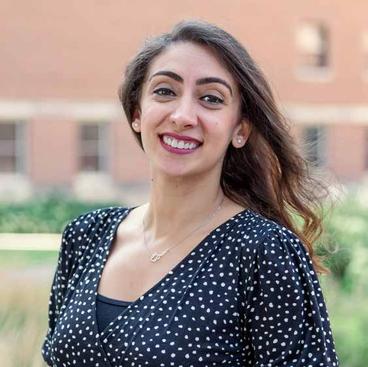Advanced education without headaches

Two advanced education learners fell in love with the field of TMD and orofacial pain, buoyed by the desire to make a real impact on patients’ lives.

Maram Taema, DDS, worked as a prosthodontist and pursued her PhD before discovering that TMD and orofacial pain impact women more frequently. “With the medical field dominated by men, and pain being subjective, I really wanted to listen to these women, and help them,” she said.
She enjoys the “challenge” of discovering the roots of orofacial pain. “It’s like a puzzle, where you have to collect the pieces to see the whole picture,” she said. “Our patients have other things going on in their life, and everything is connected when it comes to pain. We can address a lot when we see the whole person.”
Taema spends her time encouraging and mentoring DDS learners, using a mini-program, TMD diagnosis lectures and more to empower learning. “I love teaching students in a way that makes them ask questions,” she said. “I don’t want to just give them facts. I want them to think about how they can make the world a better place.”

Qiman Gao, BDS MSc, PhD, felt unfulfilled in her career as an oral surgeon and completed a PhD in craniofacial health science before coming to Minnesota to combine her love of research with her passion for clinical care. “My favorite part is the patient interaction,” she said. “You really have to listen to your patients, understand their history and any contributing factors. You’re really connecting with them.”
When she is not working clinically with patients, Gao researches the comorbidity between Trigeminal Neuralgia (TN) and TMD, as well as the expression of DNA in those with and without TMD. “Orofacial pain is subjective, and we don’t have an objective way to evaluate if a patient is improving,” she explained, in regards to the possibilities of using saliva to diagnose and measure TMD and orofacial pain. “There is a real gap, and it’s exciting to think we might be able to fill it.”
Both learners found their way to the School of Dentistry through a desire to do more, and both have fallen in love with the complex field of orofacial pain.
“I want to be a clinician-scientist,” explained Gao. “There is a big gap in translational research, and I want to fill it. I want to help my patients with the knowledge, training and experience I have.”
And for Taema, it’s all about growth. “I think you can never grow old on learning,” she said. “You can always learn more. I’m a living example of that.”
This story originally appeared in the 2023 edition of Dentistry Magazine.